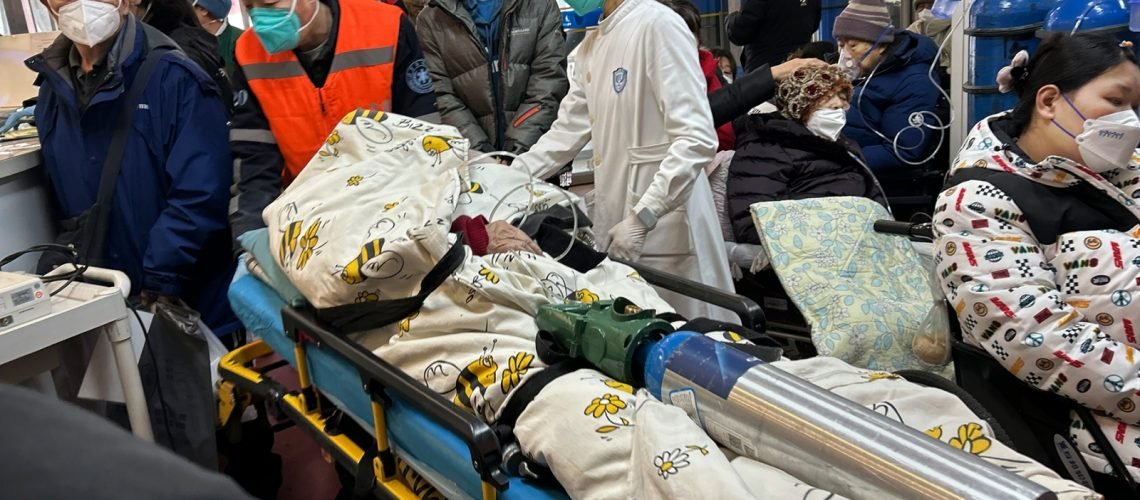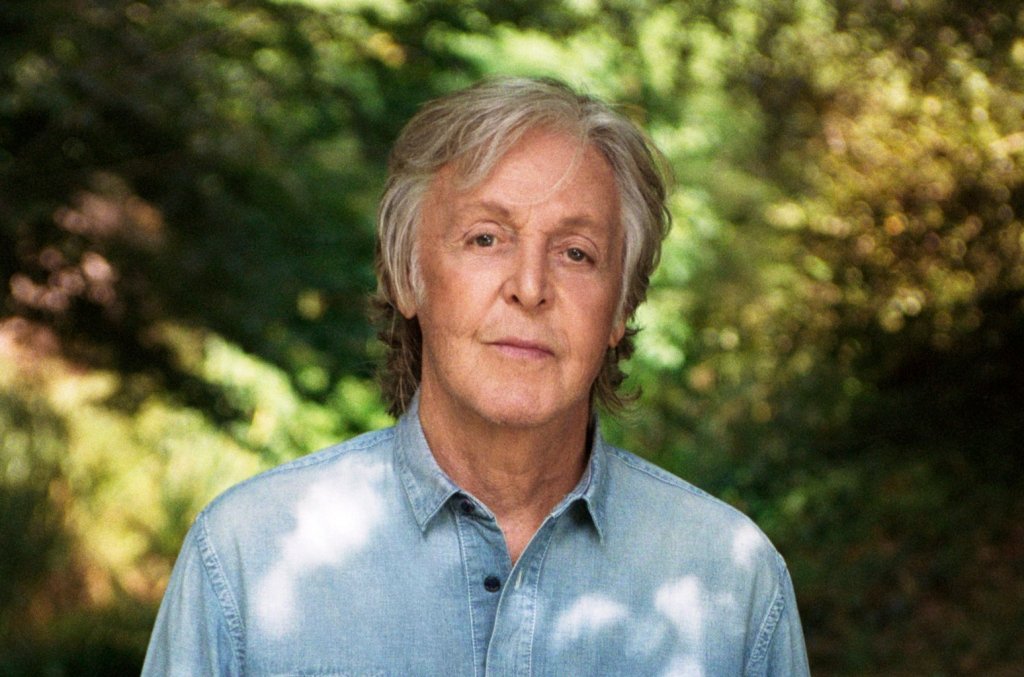There’s a new form of SARS-CoV-2, the virus that causes Covid. It’s called XBB.1.5 — and it’s nasty. XBB.1.5, otherwise known as “Kraken,” is more contagious than previous subvariants of the Omicron variant of the virus and also has more potential to evade our antibodies from vaccines and past infection.
All over the world, there’s been a surge in Covid cases related to Kraken. But that’s not what epidemiologists are most worried about as the fourth year of the coronavirus pandemic begins. No, China is what scares the experts. A country that, unlike the rest of the world, is just now catching Covid in a big way for the first time.
That’s 1.4 billion people who are experiencing what the rest of us went through in early 2020, with just a few twists. And what happens next in China could spill over into the rest of the world in frightening ways.
So far, based on surveillance of Chinese travelers arriving in Italy, China is catching old forms of Covid. “There are no new variants, but simply the existing circulating strains spreading rapidly in a population with low natural immunity,” says Paul Anantharajah Tambyah, president of the Asia Pacific Society of Clinical Microbiology and Infection in Singapore.
But that could change.
Yes, Kraken is bad. But it evolved from previous forms of the virus at a time when most of the world — China, of course, is the exception — has pretty robust immunity. Widespread vaccination was critical early on, of course, but what’s really protecting most people now, two years after the first jabs became available, is natural antibodies from past infection. That’s because natural antibodies are more effective and longer-lasting than antibodies from vaccines and boosters.
For all the debate over shutdowns, masks, vaccines, and therapies, most of the world ended up taking a reasonably smart approach to Covid. Many countries tamped down on businesses, schools, crowds, and travel through 2020, helping to slow the virus’s transmission until vaccines were available at the end of that year.
Editor’s picks
Then, as more and more people got fully or partially vaccinated — today, most of the world’s eight billion people have had at least one Covid jab, and billions have gotten jabbed and boosted — countries gradually reopened.
People got back to a version of normal. Yes, that meant more viral spread that ultimately gave us the Omicron variant and its many subvariants, which are still dominant today. But vaccines blunted the worst impacts of these many infections. Case rates went up (and down and up again and down again). But overall, hospitalizations and deaths trended down — a trend that continues today.
And all those infections fueled a beneficial cycle that began with mass-vaccination. We caught Covid and, for the most part, survived — because many millions of us were vaccinated. That rewarded us with natural antibodies that protected us from the worst outcomes the next time we caught Covid, a year or half a year later as the vaccines began to wear off. And that infection seeded the immunity for the next six or nine or 12 months.
So on or so forth. Epidemiologists expect this cycle to continue unless and until the SARS-CoV-2 virus makes some huge and surprising evolutionary leap that renders all existing antibodies ineffective.
But the longer the pandemic grinds on, the less likely this nightmare outcome appears to be. With each diminishing wave of infections, Covid starts to look more and more like the flu: a disease we should take seriously, but not one that’s likely to end the world. “Within a few years, Covid-19 will be a background risk along with seasonal influenza,” says Lawrence Gostin, a Georgetown University global-health expert.
Which is not to say Covid, like the flu, isn’t dangerous. Even non-fatal SARS-CoV-2 infections can have major consequences. Long Covid, for one — a mix of long-term symptoms potentially including fatigue, confusion, loss of senses and even cardiac problems. But even taking into account long Covid, the overall risk from the worst outcomes is decreasing in much of the world.
Related
In China, however, things could get a lot worse before they get better. That’s because China locked down in early 2020 — and stayed locked down for nearly three years as part of the country’s “Zero Covid” policy. Only on Dec. 8, following widespread public protests in many major cities, did the ruling Chinese Communist Party finally lift major restrictions in most places.
“The situation completely changed on Dec. 8,” says Ben Cowling, a professor of epidemiology at The University of Hong Kong. The restrictions had bottled up SARS-CoV-2, preventing transmission and resulting in what was, until a few weeks ago, one of the lowest rates of Covid cases of any country. But the lack of infections also meant a lack of natural antibodies.

People gather at Tian’anmen Square to watch a flag-raising ceremony to celebrate New Year’s Day on Jan. 1, 2023 in Beijing, China.
VCG/Getty Images
Yes, some 90-percent of the Chinese population is at least partially vaccinated. But the hundreds of millions of Chinese seniors, who are most vulnerable to Covid, are also the least likely to be vaccinated — a reluctance experts attribute to misinformation in Chinese media. And most Chinese who are vaccinated got vaccinated more than a year ago. By now, the protection from those early vaccinations has mostly worn off.
So when restrictions lifted and a billion-plus Chinese finally started going out and traveling, they did so without the protection that the rest of the world earned the hard way, through past infection.
It should come as no surprise that China is getting really sick right now. “Almost everyone in the population is susceptible to infection because there were very few infections prior to December 2022, and very few recent vaccine doses — which can provide temporary protection against infection,” Cowling explains.
Just how sick is hard to say for sure, as the country’s authoritarian regime has stopped reporting reliable data. “There are fortunately some objective ways of assessing what is happening in China besides depending on China’s lively social media scene, which brought the pandemic to the world’s attention in the first place,” Tambyah says.
More and more countries are testing travelers arriving from China. Malaysian health authorities are even testing the wastewater in passenger planes flying in from Chinese airports. Projecting from these samples, experts can begin tracking the Chinese outbreak, even without China’s help. “Ideally this would include virus samples for genomic sequencing in order to know whether a new and ominous variant of concern has emerged,” says Peter Hotez, an expert in vaccine development at Baylor College.
China could be in for a rough 2023 as it catches up to the beneficial cycle of infection and reinfection that protects most of the rest of the world and makes the pandemic “normal” for many of us. A lot of Chinese people — potentially a majority of the population, according to Cowling — will have to catch the virus, and survive it, before China achieves its own new normal. Most of them will do it with minimal immunity.
Consider that it cost the United States — a country with a billion fewer people than China — more than a million Covid deaths to build up the significant natural immunity it has today. “It’s a grim and tragic statistic,” says Eric Bortz, a University of Alaska-Anchorage virologist and public-health expert. “China is looking down that barrel right now.”
The risk, for the rest of the world, is that millions upon millions of serious Covid infections in China could function as a kind of incubator for new and more dangerous forms of the novel-coronavirus.
Every infection is an opportunity for the pathogen to mutate. It’s like a slot machine, says Niema Moshiri, a geneticist at the University of California, San Diego. Each individual infection tends to produce two mutations every two weeks, Moshiri explains. In other words, the virus gets two pulls of the lever twice a month, hoping to score a genetic jackpot that will give it some new advantage. Greater transmissibility. More ability to evade antibodies.
Trending
“What if we had 50 million people pull slot-machine levers simultaneously at the same time?” Moshiri asks. “We would expect at least one person would hit the jackpot pretty quickly. Now, replace the slot machine with ‘clinically meaningful SARS-CoV-2 mutation,’ and that’s the situation we’re in.”
It’s fair to say that, even with the new Kraken subvariant rearing its nasty little head, most of the world has Covid more or less under control. But China doesn’t. And some new variant evolving from the Chinese outbreak could spoil 2023 for everyone else.




